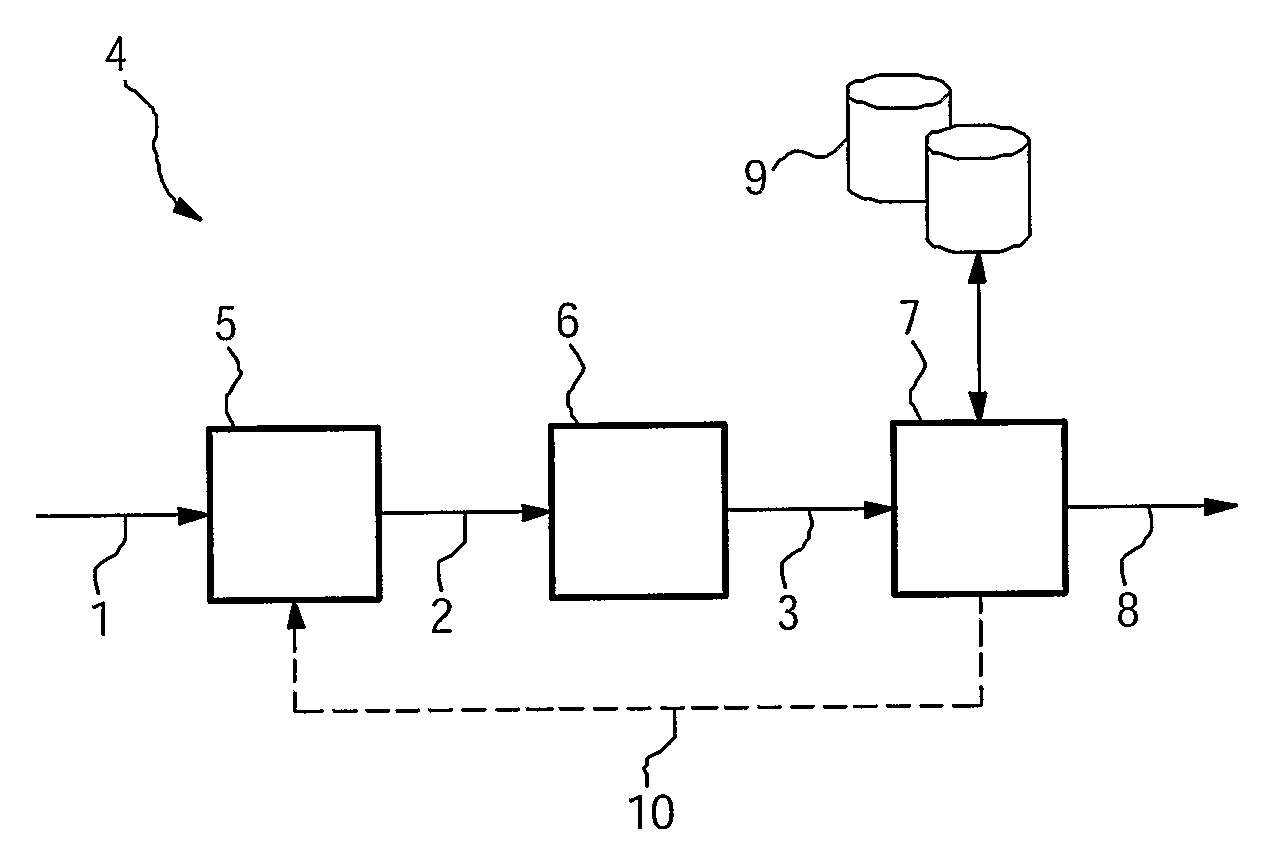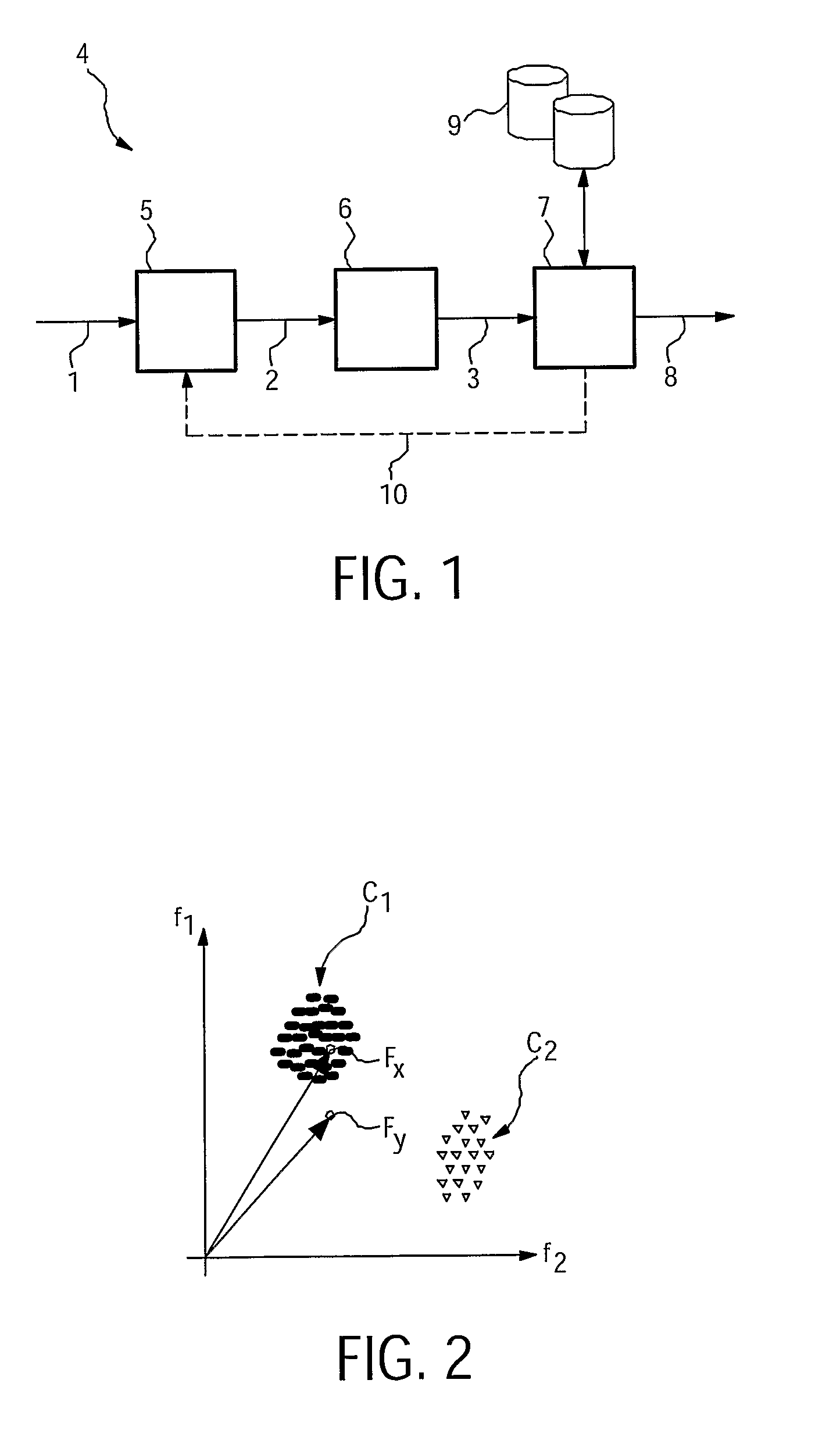Method of and System For Classification of an Audio Signal
- Summary
- Abstract
- Description
- Claims
- Application Information
AI Technical Summary
Benefits of technology
Problems solved by technology
Method used
Image
Examples
Embodiment Construction
[0027]In FIG. 1, an audio input signal 1, in this case a digital music input signal 1 originating from a music data file, music track, MP3 file or similar, is input to a classification system 4.
[0028]In a feature extraction unit 5, features 2 are extracted from ten 743 ms frames of the audio input signal samples. The samples are preferably taken from a position towards the middle of the track or music data file, since the beginning and end of a music track can often sound somewhat different to the main part.
[0029]In a following derivation unit 6, one feature vector 3 is computed for the features 2 of each of the ten frames of the input audio signal 1.
[0030]Each feature vector 3 then undergoes a classification process in a probability determination unit 7, where steps of analysis are performed to determine the probability that a feature vector 3 falls within one particular class of a number of possible classes.
[0031]Therefore, the classification system 4 has access to a database 9 co...
PUM
 Login to View More
Login to View More Abstract
Description
Claims
Application Information
 Login to View More
Login to View More - R&D
- Intellectual Property
- Life Sciences
- Materials
- Tech Scout
- Unparalleled Data Quality
- Higher Quality Content
- 60% Fewer Hallucinations
Browse by: Latest US Patents, China's latest patents, Technical Efficacy Thesaurus, Application Domain, Technology Topic, Popular Technical Reports.
© 2025 PatSnap. All rights reserved.Legal|Privacy policy|Modern Slavery Act Transparency Statement|Sitemap|About US| Contact US: help@patsnap.com


